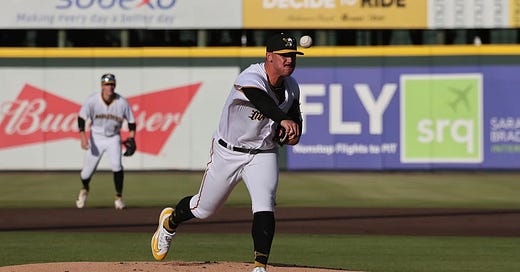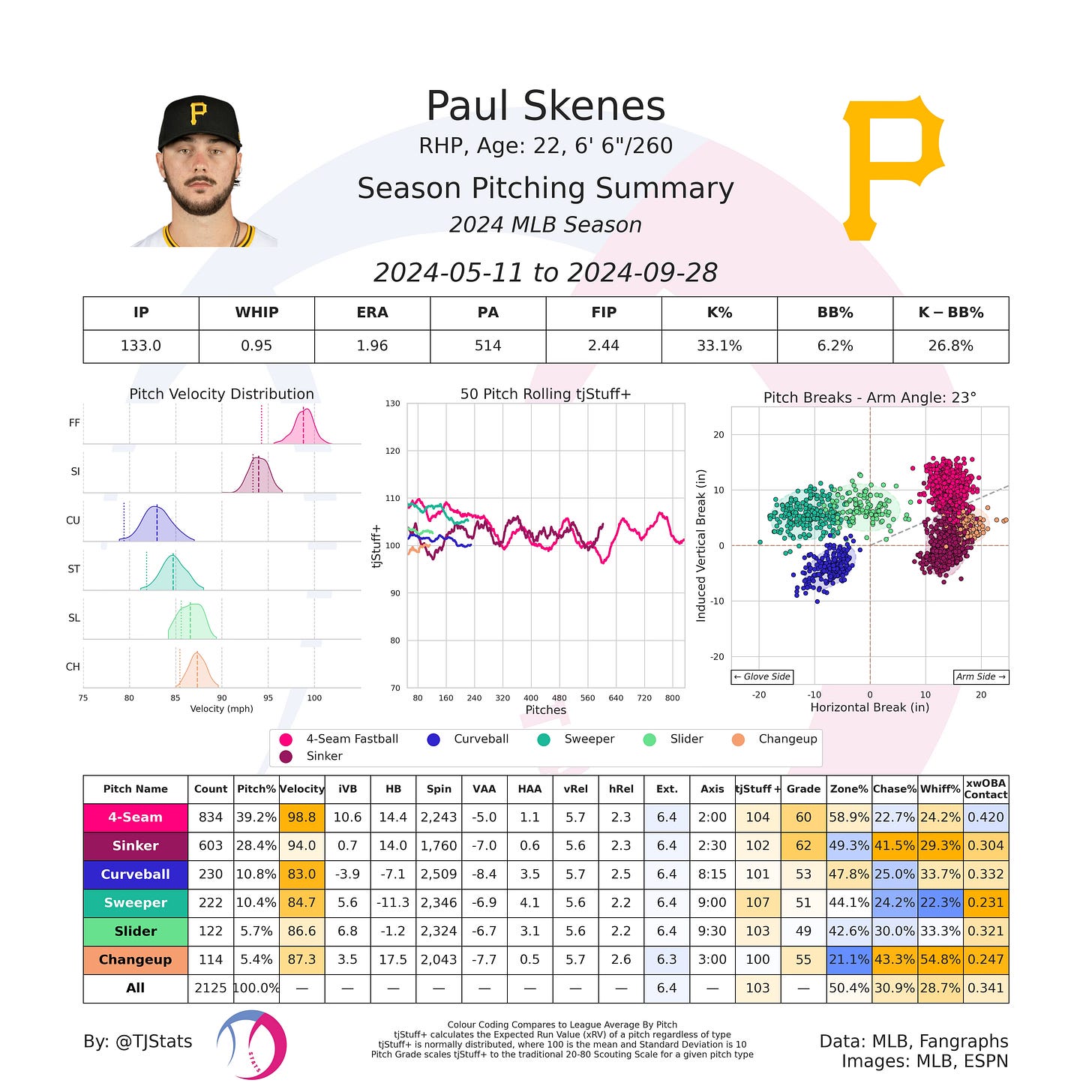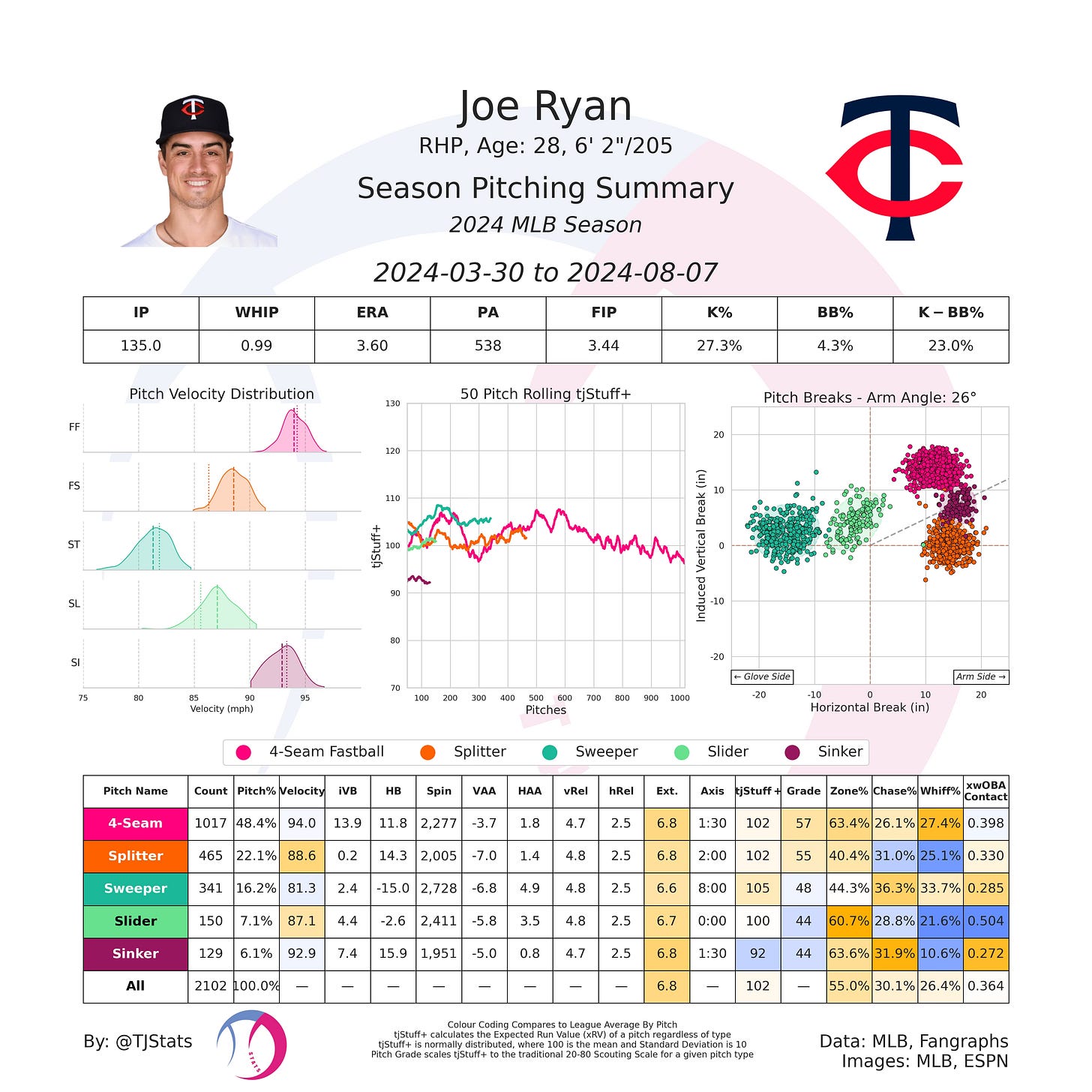Tale of two fastballs: A Paul Skenes vs Joe Ryan St. Patrick's Day matchup
How two pitchers use their fastball in different ways to have the same type of success
On my last day in Bradenton, I was treated to a pretty good pitching matchup: Paul Skenes vs. Joe Ryan from the Minnesota Twins.
It was also a great example of different paths leading to the eventual endpoint, even with the same pitch. Skenes and Ryan had a lot of success with their fastballs on that day and the previous season.
The way they’ve gone about having success with it is different, however. One relies on pure velocity and command, overwhelming hitters. The other uses pitch shape and other metrics to fool the opposition on a pitch around average in velocity.
Paul Skenes’ overpowering fastball
There is a lot of talk about pitch shape these days. As more data becomes available, teams are looking for ways to gain an advantage. At one point, there was talk about how well Skenes’ fastball would play at the major league level due to its ‘dead zone’ shape.
Coming off perhaps the best rookie pitching performance in major league history, Skenes is looking to build off that in year two. He has countless pitches in his arsenal, but the triple-digit fastball brings fans out of their seats.
According to Baseball Savant, Skenes averaged 98.6 mph on his four-seam fastball in 2024, and opponents hit .230 off it (along with a .201 xBA).
The shape is technically approaching dead zone territory, and he doesn’t get great extension, but where he locates the pitch at the velocity he does, it renders most pitch metrics moot.
You can see that despite his steeper approach from a lower arm slot and the extension, his velocity and Zone% help grade the pitch grade out well.
Are there some improvements that could be made? Sure, the .420 xwOBACON isn’t ideal, and in the game on Monday, he allowed some solid contact with the pitch, but that’s where adding a cutter and two-seamer should help.
Data darling fastball from Joe Ryan
Ryan has emerged as a solid pitcher in his four years in the majors, even though injuries have somewhat limited his innings, especially in 2024.
He has a career 27.4% strikeout rate while walking just 5.7% of the batters he faced. He struck out 197 batters (to 34 walks) in 161.2 innings in 2023 before punching out 147 in 135 IP last year.
Despite the fewer innings, he actually put up a better fWAR (3.1 to 2.3), and his fastball was a big part of that.
Despite a below-average velocity with his four-seamer, Ryan finished in the top 20 when it comes to whiff rate. He pounded the strike zone with a fastball with an extremely flat approach angle (VAA) from a release point under five-foot and plus extension.
That led to hitters registering a .191 batting average against his fastball, with an identical expected batting average mark (which factors in quality of contact).
On St. Patrick’s Day, Ryan got five whiffs on 11 swings (45%), with another seven called strikes (40 CSW%). The rest of his pitches got just one whiff on another 11 swings. He got more called strikes plus whiffs (CSW) than the rest of his pitches combined.
Final Analysis
When you think of a really good fastball, it’s probably Skenes that comes up: big velocity that bullies hitters.
There have always been pitchers who have had success without that kind of velocity, and thanks to these pitch metrics, we finally have a better understanding of why.
While Skenes is one of the two or three best pitchers in baseball, Ryan has emerged as a solid arm in his own right.
The end goal of pitching is to get the opposing hitters out. Skenes and Ryan both do that well, and their fastball is a factor in that; they just approach it in a completely different way.
Support the site by becoming a paid member, and get access to all of our premium content, including our Top 25 list with complete player write-ups and video breakdowns, which come out weekly.
It will also give access to my player feature articles from on-site trips.
We have monthly and yearly plans available, with the latter costing an average of $4.16/month








I recently read 100 mph middle middle is harder to hit than 92 on the corner.